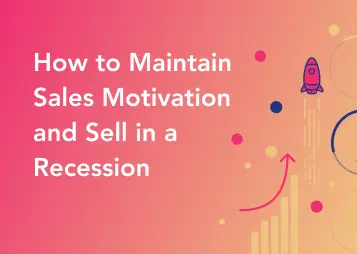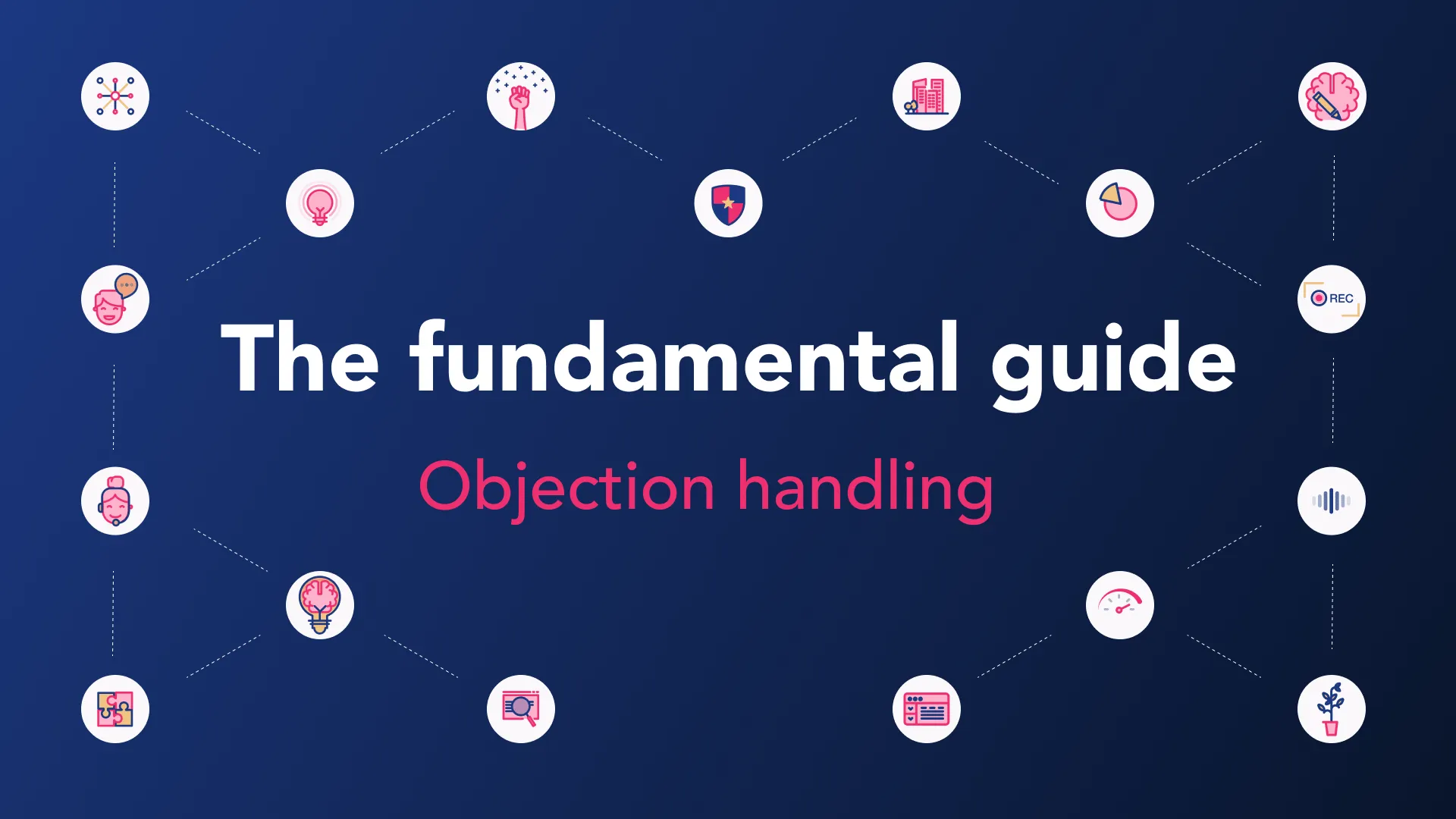Decades of experience in sales teach you a thing or two. I’ve seen firsthand the incredible impact that effective sales methodologies can have on your sales success. However, I’ve also learned that a one-size-fits-all approach rarely works in the dynamic and ever-evolving landscape of modern sales.
The Sandler Selling System has long been a cornerstone of successful selling strategies, known for its structured and consultative approach. But to truly leverage its power in today’s market, you need to adapt and refine the method to fit the unique challenges and opportunities of the specific industry you are selling in.
In this blog, I’ll delve into how to tailor the Sandler Selling System for some of the most common and lucrative sales industries today -
Tech and SaaS sales
Financial services
Advertising sales
Wholesale
By understanding and addressing the nuances of each sector, we can enhance our sales effectiveness and drive better results. Let’s explore how we can modernize this timeless methodology to meet the demands of 2024 and beyond.
Introduction to the Sandler Selling System
The Sandler Selling System, created by David H. Sandler in 1967, revolutionized sales by shifting the focus from the traditional hard-sell approach to a more consultative, relationship-driven model. The core principle of the Sandler method is to qualify the prospect thoroughly before investing time and effort into the sale, thereby ensuring a more efficient and productive sales process. It’s built on a foundation of mutual respect and transparency between the salesperson and the prospect.
Since its inception, the sales landscape has undergone dramatic changes. Technology has transformed how we connect with prospects, communicate with clients, and manage sales processes. The rise of digital communication tools, CRMs, social media, and conversation intelligence platforms has given salespeople unprecedented access to information and insights.
The Sandler Selling System is built on several key principles and steps:
- Rapport: Cultivate a relationship of equal business standing from the get-go and foster an atmosphere of open, two-way communication.
- Up-front contracts: Define roles and set expectations early on to create a comfortable and clear framework for conducting business.
- Pain: Identify the prospect’s pain points and challenges.
- Budget: Determine if the prospect has the budget to address these pain points.
- Decision: Understand the decision-making process within the prospect’s organization.
- Fulfilment: Demonstrate how your solution meets the prospect’s needs.
- Post-sell: Ensure the prospect remains satisfied after the sale.
The first two steps should be approached in similar ways regardless of the industry you’re selling in. It’s all about human connection, after all. The only differences here come when you consider face-to-face vs remote selling. For advice on how to connect and build trust when selling remotely, check out our guide here.
Let’s break down how principles 3 - 7 can be tailored for each industry, incorporating modern sales techniques and technologies.
Applying the Sandler Selling Method to the tech and SaaS industry
The tech and SaaS industry is fast-paced, constantly evolving, and highly competitive - particularly in B2B. Sales cycles can be complex, involving multiple stakeholders and requiring a deep understanding of technical specifications. And don’t get me started on those shrinking budgets!
Pain: Identifying tech and SaaS challenges
In tech sales, pain points often revolve around efficiency, scalability, security, and innovation. Use data analytics and CRM tools to gather insights into a prospect’s current setup, challenges, and potential areas for improvement. For example, if selling a cybersecurity solution, identify common security breaches the prospect might face.
Example: “We’ve noticed many companies in your sector struggle with data breaches due to outdated security protocols. How are you currently managing your cybersecurity?”
Budget: Assessing financial viability for your tech product
Tech solutions can be expensive, and budgets are often tight. Use your CRM to track historical spending patterns and budget cycles of similar companies. Discuss ROI and how your solution can save costs, increase efficiencies or drive revenue.
Example: “Our cybersecurity solution has helped companies like yours reduce breach-related costs by 30%. Do you have a budget allocated for enhancing your security infrastructure this year?”
Decision: Navigating complex decision-making for B2B tech sales
Tech sales often involve multiple stakeholders, including IT managers, CEOs, and procurement officers. Use LinkedIn and internal CRM notes to map out the decision-makers and their influence.
Example: “Can you walk me through your decision-making process for new technology investments? Who else besides yourself would be involved in evaluating this solution?”
Fulfilment: Demonstrating technical benefits
Tech buyers need to see clear, tangible benefits. Create engaging and impactful product demos, case studies, and white papers to illustrate how your solution addresses their pain points effectively.
Example: “Let me show you a case study of how our solution reduced breach incidents for a company similar to yours by 50%. Focusing on the problems you are looking to solve, I’ll show you how our platform achieves these outcomes in a quick demo.”
Post-sell: Ensuring ongoing satisfaction with tech and SaaS products
In the tech industry, post-sale support and Customer Success is crucial. Regular check-ins, updates, and additional training sessions can help ensure your product continues to meet the client’s needs.
Example: “We’ll schedule quarterly or monthly reviews to make sure our solution continues to meet your evolving needs and provide any necessary updates or additional training. How would you best like to be communicated with? And what support do you think your team will need to ensure long-term adoption?”
Sandler Selling Method in tech and SaaS: effectiveness and recommendations
The Sandler method’s focus on understanding pain points and decision-making processes is particularly effective in tech sales due to the complexity and high stakes involved. However, to adapt to 2024, leverage data analytics to gain deeper insights and use digital communication tools like video calls and webinars to maintain a personal touch despite remote interactions.
Applying the Sandler Selling Method to financial services sales
The financial services sector is highly regulated, competitive, and trust-driven - if you’re in it, you don’t need me to tell you! Buyers will fixate on trust, security, compliance and financial returns - so there’s lots of potential here for Sandler.
Pain: Identifying financial services challenges
Pain points often include risk management, customer trust and regulatory compliance - though this is something you should be clued up on specific to your product and its competitors. Use industry reports and client data to identify these common financial challenges and risks.
Example: “We know that risk management can be a real concern for individuals in your situation. How are you currently addressing this?”
Budget: Assessing financial viability for financial services
Financial services buyers will be thinking about ROI, cost savings, and risk mitigation. Discuss the financial impact and the potential return on investment of your solution.
Example: “What do your financial processes and solutions look like right now? How much of a priority are they? And how and where is budget allocated for them?”
Decision: Navigating decision-making in financial services sales
Decision-making in financial services involves various stakeholders, including compliance officers, CFOs, and risk managers. Use CRM and LinkedIn to identify and understand their roles and influence.
Example: “Can you explain your approval process for financial services? Who are the key decision-makers and who else should be involved?”
Fulfillment: Demonstrating financial benefits
Financial services buyers need clear evidence of benefits. Use detailed reports, case studies, and ROI calculators to demonstrate the value of your solution.
Example: “I’d love to show you how what we do has consistently delivered a 20% ROI for similar businesses. Would you prefer this as a video, report or a quick call?”
Post-sell: Ensuring ongoing satisfaction
Ongoing support and regular performance reviews are critical in financial services. Maintain regular contact and provide updates on new features or compliance changes.
Example: “We’ll provide quarterly performance reviews to ensure our solution continues to meet your compliance needs. In terms of regulatory changes - don’t worry, we’re proactive on keeping you where you need to be.”
Sandler Selling Method in financial services: effectiveness and recommendations
The Sandler method’s structured approach is effective in the regulated and trust-centric financial services industry. To adapt to 2024, incorporate AI and conversation intelligence tools for predictive analytics and personalized client recommendations, enhancing your ability to address specific pain points and demonstrate value.
Applying the Sandler Selling Method to advertising sales
The advertising industry is dynamic, with rapid changes driven by digital media, social platforms, and data analytics. Sales cycles can be short, and creativity and results are paramount.
Pain: Identifying challenges when selling advertising
Pain points in advertising often include audience targeting, ROI measurement, and staying current with trends. Use social listening tools and campaign analytics to understand a prospect’s current advertising performance and challenges.
Example: “Many advertisers struggle with accurately measuring campaign ROI. How do you currently track and optimize your ad spend?”
Budget: Assessing financial viability when selling advertising
Advertising budgets can be flexible but are closely tied to performance. Discuss potential returns, cost efficiency, and creative value of your solution.
Example: “Our targeted ad campaigns have increased ROI by 50% for similar clients. What is your current budget for digital advertising?”
Decision: Navigating decision-making when selling advertising
Decision-making in advertising often involves marketing teams, brand managers, and creative directors. Use LinkedIn and CRM data to identify key influencers and decision-makers.
Example: “Who typically approves new advertising strategies in your team? Can you tell me more about their priorities and expectations?”
Fulfilment: Demonstrating advertising benefits
Showcase your success with past campaigns and how your solution can drive engagement and ROI. Use visual aids, detailed reports, and testimonials.
Example: “Here’s a case study showing how we boosted engagement by 30% for a similar brand. Let me show you some creative examples that resonated well with their audience.”
Post-sell: Ensuring ongoing satisfaction in advertising sales
Advertising clients expect continuous creativity and performance improvements, as new opportunities arise on digital platforms every day. Regular campaign reviews and creative brainstorming sessions can help maintain satisfaction and drive long-term relationships.
Example: “We’ll schedule monthly reviews to keep you up to date on the latest trends and opportunities, analyze campaign performance and brainstorm new ideas to keep your brand at the forefront.”
Sandler Selling Method in advertising sales: effectiveness and recommendations
The Sandler method’s emphasis on identifying pain points and qualifying prospects is effective in the fast-paced advertising industry. To adapt to 2024, leverage advanced analytics and AI tools for better targeting and measurement, and use virtual collaboration tools to enhance creative development and client engagement. Proactivity in the post-sell phase, particularly around new advertising options will be hugely beneficial.
Applying the Sandler Selling Method to wholesale
Wholesale is characterized by bulk transactions, price sensitivity, and long-term relationships - it ain’t easy! Sales cycles can be lengthy, and loyalty plays a significant role in buying decisions so be sure to get your first two steps (rapport and up-front contracts) nailed.
Pain: Identifying wholesale challenges
Pain points in wholesale often include inventory management, pricing pressures, and supply chain disruptions. Use your CRM to analyze past orders and identify trends that may indicate pain points.
Example: “We’ve observed that many wholesalers face challenges with inventory turnover. How do you currently manage excess inventory?”
Budget: Assessing financial viability in wholesale
Wholesale buyers are typically budget-conscious and focused on margins. Discuss volume discounts, payment terms, and the long-term cost benefits of your offering.
Example: “Our bulk purchase discount structure can significantly improve your profit margins. Have you allocated a budget for inventory replenishment this quarter?”
Decision: Navigating decision-making in wholesale
Decision-making in wholesale often involves procurement teams and finance departments. Use CRM data and industry connections to identify key decision-makers and their priorities.
Example: “Who in your team typically handles negotiations for bulk purchases? What are their main considerations when selecting a supplier?”
Fulfilment: Demonstrating wholesale benefits
Showcase how your wholesale option can improve efficiency, reduce costs, or enhance product quality. Use testimonials and case studies from similar clients to build credibility.
Example: “Our clients have reported a 20% reduction in inventory holding costs after switching to our streamlined supply chain solution. I’d love to show you how - would you prefer a video, case study or we can talk it through with their Account Manager?”
Post-sell: Ensuring ongoing satisfaction in wholesale
In wholesale, long-term relationships are crucial. Regular follow-ups and proactive problem-solving can help maintain loyalty and encourage repeat business.
Example: “Let me introduce you to who your Account Manager would be, they’ll be helping you make the most of your budget and keep you up to date on the best options available to you.”
Sandler Selling Method in wholesale: effectiveness and recommendations
The Sandler method’s emphasis on understanding pain points and decision-making fits well with the relationship-driven nature of wholesale sales. To adapt to 2024, use AI-driven inventory and sales forecasting tools to provide more precise insights and recommendations, enhancing your value proposition.
Tom Lavery is the CEO and Co-Founder of Jiminny, the leading conversation intelligence and sales coaching platform that helps companies maximize their revenue. With over 15 years of experience in high-growth VC/PE-backed SaaS companies, Tom was previously SVP at Reward Gateway, now sharing his wealth of knowledge as a speaker in the conversation intelligence space.





.webp)






